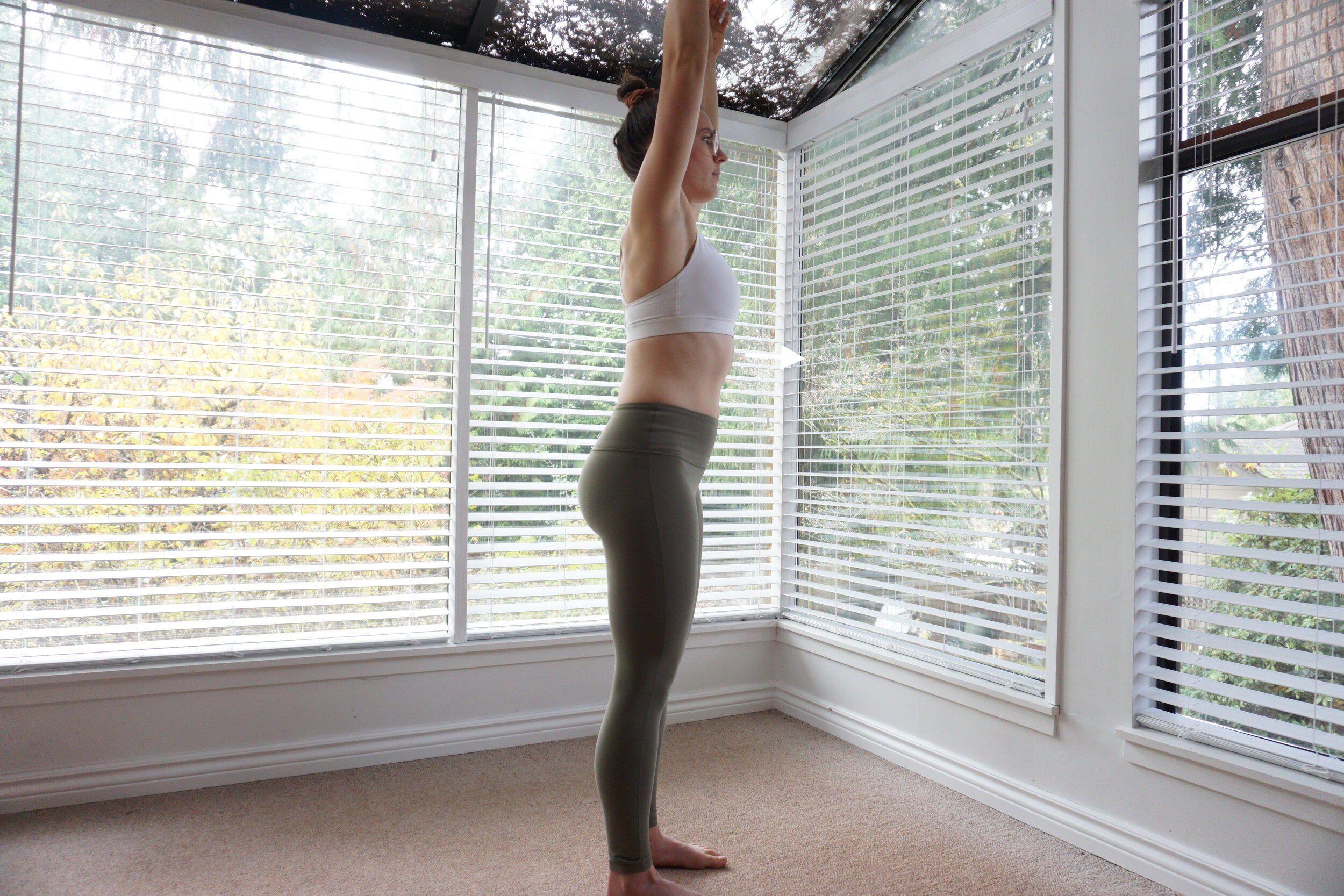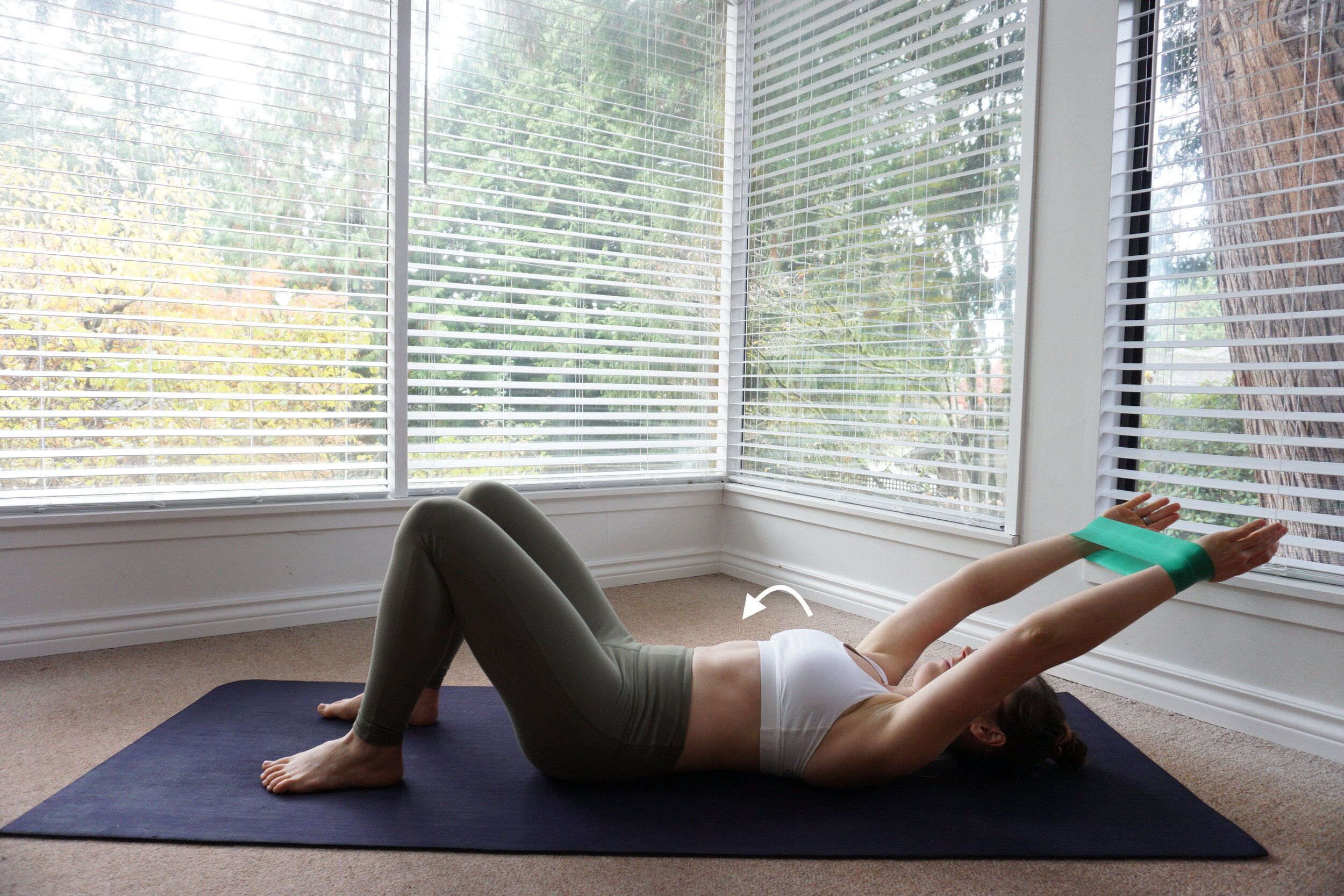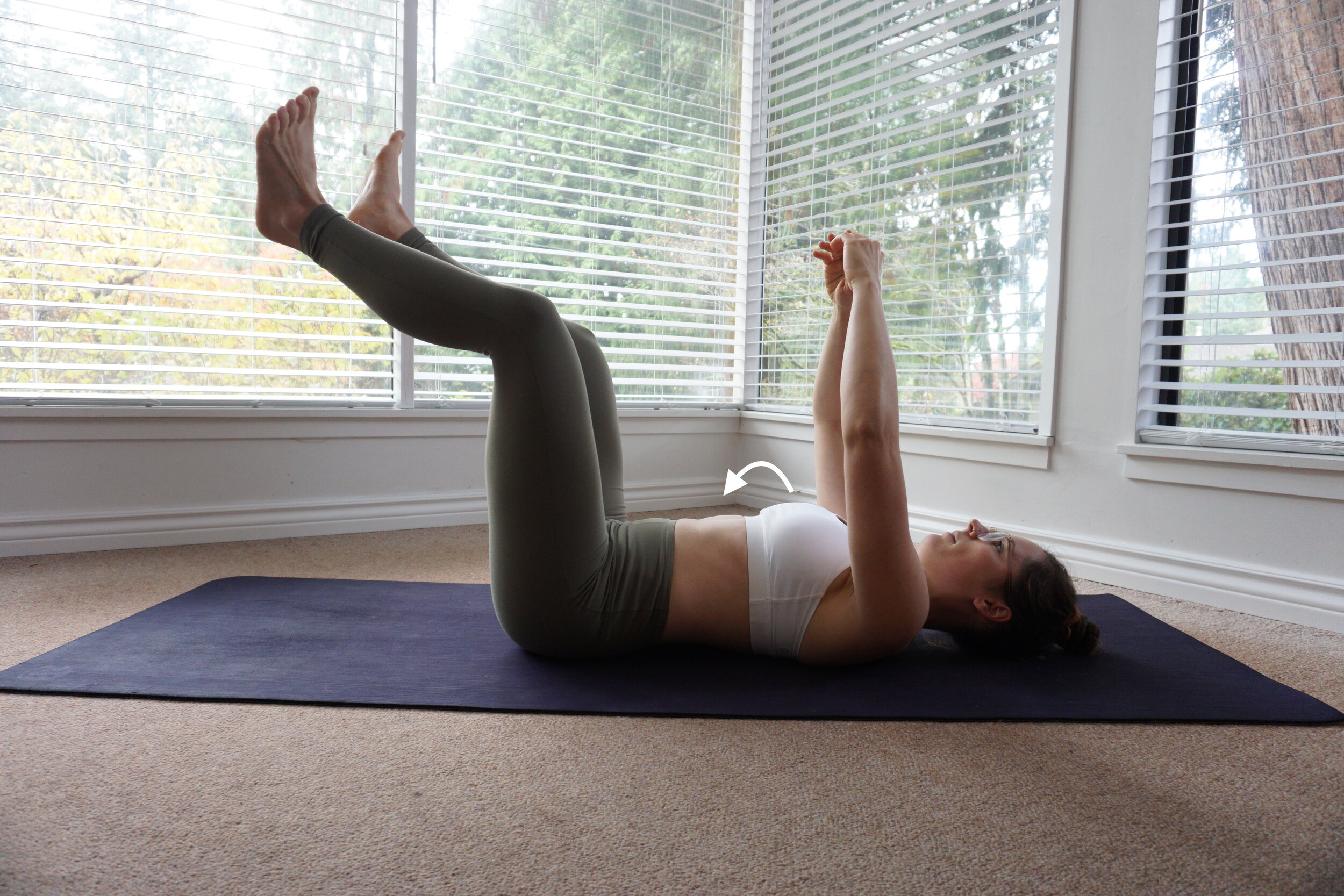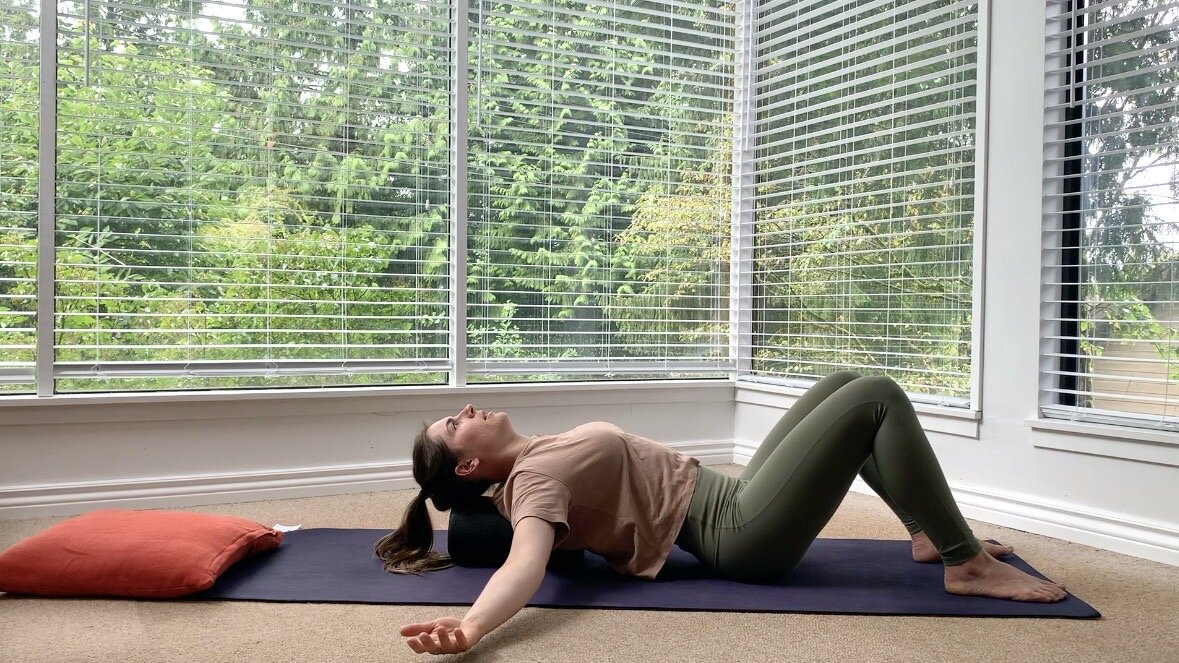Are You A Rib Thruster
This could be what is causing your back pain, shoulder pain or diastasis…
What is rib thrusting?
Rib thrusting essentially means that you are thrusting the lower part of your rib cage forward (see photo below).
Anatomically speaking, the diaphragm is no longer parallel with your pelvic floor. This creates many compensation patters such as: compression in your mid/lower back, tension in your chest and inadequate core contraction.
Restoring this muscle imbalance and breaking this chronic rib thrusting pattern can be super tricky because it is deeply ingrained into us and it is linked to many other contributing factors.
Notice how my lower ribs are flaring out, so my ribs are more forward than pubic bone.
When you anchor your lower ribs, your ribs are aligned with your pubic bone. This allows for better core activation and a more neutral spine and posture.
How do you know if you are a rib thruster?
There are a couple different ways that you can check the position of your rig cage. It is important to check all four ways (described below), because you might only be rib thrusting in one or two of the ways.
Stand up and run your hands down the front of your rib cage to your stomach. Do you feel a bump from the transition of your ribcage to your stomach?
Now lift your arms up over your head? Did the bump get bigger? If so, you are thrusting your ribs to help you get your shoulders over your head.
Lie down on your back and run your hands down the front of your rib cage to your stomach. If you feel a bump from the transition of your ribcage to your stomach, you are probably thrusting your ribs.
Now lift your arms up over your head? Did the bump get bigger? If so, you definitely are thrusting your ribs.
Run your hands down the front of your ribcage to your stomach. You shouldn’t feel a distinct bump from the transition of your rib cage to your stomach.
Now, reach your arms over your head and reassess the transition from you rib cage to your stomach. If you find the rib bump gets bigger, you now know that you are compensating shoulder range of motion for rib thrusting.
Run your hands along the transition of your lower rib cage and your stomach, if you feel a distinct bump, that is a sign you are rib thrusting.
Now reach your arms over your head. Did the rib bump get bigger?(
Ignore the exercise band (that is for an exercise below)
Why do we rib thrust?
There are many different reasons why you might be thrusting your ribs. Often times it is a combination of one or all of them. So when working on improving your posture and decreasing your rib flare you should address all of the reasons.
Tight chest muscles (from siting all day long and/or chest breathing)
Decreased shoulder ROM
Decreased core engagement
Engrained posture cues: “chest out, shoulders back”
It does create a flatter looking stomach
Why should you work on your rib thrust?
Can contribute to diastassis recti and pelvic floor disfunction
Can cause neck, mid back or low back pain
Can also effect your shoulder range of motion and lead to shoulder pain
Also effects your ability to adequately engage your core
Exercises that you can do to anchor your lower ribs
Lifestyle and postural habits caused this, modifying your life style and your daily postures can also fix this. But remember that it takes time! It took years for your body to adapt these muscle imbalances, it will take time to undo these patterns.
Pretty much any exercise or movement that you do, you can think about anchoring your lower rib. When you are sitting, think about anchoring your lower ribs. When you are reaching for something over your head, anchor your lower ribs. You get it…. Here are some exercises specifically for improving rib thrusting.
Supine Over Head Reach
Anchor your lower rib
Using an exercises band, pull wrists apart
Slowly reach arms over head
Stopping if you can no longer keep ribs anchored
Dead Bug
Anchor your lower ribs
Lift legs up and reach arms forward
Slowly reach one arm over your head and then the other
Slowly straighten one leg and then the other
Bird Dog
Starting in table top, anchor your lower ribs
Reach one arm over your head and then the other
Straighten one leg behind you and then the other
Foam Roll Mid Back
Lie down on the foam roller, vertically and do snow angels with your arms
Make sure to keep your ribs anchored!!
You can also place the foam roller horizontally and roll your back up and down
Shoulder stretch
Place your hands on the foam roller (or pillows)
Anchor your lower ribs
Sit your hips back like you are down child’s pose
Take slow deep breaths













